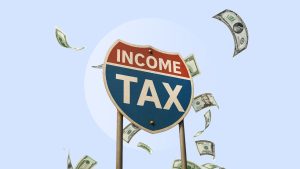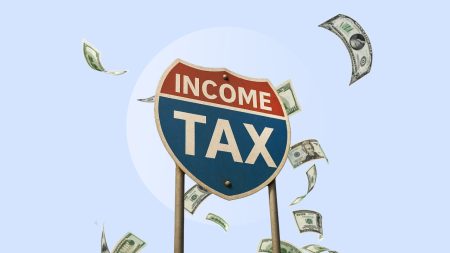10’000 Hours/Getty Images
Key takeaways
- You can log into the Federal Student Aid website to identify what type of loans you have.
- Federal student loans are distributed by the federal government and are serviced by lenders assigned by the Department of Education.
- Major changes are coming to federal loans starting July 1, 2026, that will limit repayment options for new borrowers.
- Private student loans are offered by banks, credit unions and online lenders.
Between 30 and 40 percent of undergraduate students take out federal student loans each year to help pay for school. Many others turn to private loans or a mix of both. If you’re unsure whether your student loans are federal or private, there are a few ways to check.
Understanding what type of student loans you have matters more than ever, especially with upcoming changes to federal loan programs that will significantly impact borrowers starting in 2026.
3 Ways to figure out what type of loan you have
Try logging into the Federal Student Aid website using your FSA ID to see a list of all federal student loans in your name. On your account dashboard, you can find “My Loan Servicers” or check the National Student Loan Program System. If you’re making payments to a lender that isn’t listed, your loan is likely private.
Current federal student loan servicers
If you’re unsure if your loan is federal or private, log into your lender’s account — or the place you make your monthly payments. The current federal student loan servicers are:
There’s also a chance you originally had federal student loans through a servicer that no longer works with the federal government. In that case, your loan was moved to a different servicer on this list. Many loans switch hands throughout their lifetimes, so it’s not uncommon to have a different servicer now than when you graduated.
Verify with your school
Your school’s financial aid office can help you figure out what types of loans you have. They keep records of all the financial aid you received, including federal and private loans. If you’re still enrolled, stop by the financial aid office with your student ID. If you’ve graduated, call them with your Social Security number, and they should be able to pull up your records and tell you which loans are federal or private.
Check your billing statement
Look at your monthly loan statement or login to your servicer’s website. If you see one of the federal servicers listed above (like Nelnet or MOHELA), that’s a good sign you have federal loans. Private loan statements will show bank names like Wells Fargo, Discover, or Sallie Mae.
How to tell if your loan is federal
If you’re still unsure how to tell if your loan is federal, you can check whether it’s labeled “direct” or check your credit report.
“Direct” is in the name of the loan
- All federal loans will have “Direct” in their names, like “Direct Subsidized Loan,” “Direct PLUS Loan” or “Direct Consolidation Loan,” for example.
- For PLUS Loans, you might see specific titles, like “Parent PLUS Loans.” Older student loan names include Perkins, FFEL, and Stafford.
Your credit report states the loan
- When you check your credit report, it’ll list the lender of your student loans. It might say the Department of Education or the lender who manages your loan, which can be any of the ones we listed above.
- If you have a lender that manages both federal and private student loans – like Nelnet – you may have to call to see which type of loans you have.
Money tip:
You can get free weekly copies of your credit reports from AnnualCreditReport.com.
Federal vs. private student loans: What’s the difference?
Federal student loans
With the passage of the One Big Beautiful Bill (OBBB), major changes are coming to federal student loans starting July 1, 2026. New borrowers will only have two repayment options: the revised standard repayment plan and the new Repayment Assistance Plan (RAP).
Current income-driven repayment plans like Pay As You Earn (PAYE) and income-contingent repayment (ICR) will be eliminated by July 1, 2028, leaving only income-based repayment (IBR) as an option for existing borrowers.
Keep in mind:
Current SAVE plan borrowers should know that interest started accruing again on August 1, 2025.
The new RAP plan requires 30 years of payments for loan forgiveness, compared to 20 to 25 years under current plans. Other changes include stricter deferment rules (economic hardship and unemployment no longer qualify) and shorter forbearance limits (reduced from 12 months to 9 months). Graduate PLUS loans will also be eliminated, and new federal loan limits have been put in place.

What to know about your evolving federal student loan repayment options
If you want to know more about upcoming student loan repayment options, principal loan writer Andrew Pentis breaks it down for you.
Learn more
Private student loans
With the new caps on federal loan amounts and the elimination of graduate PLUS loans, more students may need to turn to private loans to cover funding gaps. This could make private loans more important in the overall student loan landscape, especially for graduate students and those attending expensive schools.
Private student loans come from private institutions, like banks, credit unions and online lenders. You can take out private student loans any time during school, but the vast majority of lenders require a credit check. If you don’t have a strong enough credit score you may need to ask someone close with good credit to be a cosigner. Once you graduate, both you and your cosigner become responsible for your loans.
Interest rates tend to be higher for private loans compared to federal loans if you have little to no credit history, but private lenders offer variable and fixed interest rates. Repayment terms for private loans are shorter – ranging from five to 15 years – which means you’ll have larger monthly payments. While shorter terms may mean higher monthly payments, they also mean you’ll pay less total interest over the life of the loan compared to stretching payments over a longer period.

Federal student loan changes making you eye private lenders? Here are 7 with federal loan-like perks
Wondering if private student loans may be better for your situation than federal student loans? Senior loans writer Lauren Nowacki breaks it down for you.
Learn more
Federal vs. private student loans
| Key points | Federal | Private |
|---|---|---|
|
Interest rates |
Fixed, set every year by Congress |
Fixed or variable, set by each lender |
|
When you start paying |
After a six-month grace period once you graduate, when you drop below half-time enrollment |
While still in school, some lenders let you defer until after you graduate |
|
Credit check |
Not for most loans |
Yes, requirements vary by institution |
|
Credit impact |
Monthly payments reported to credit bureaus, missed payments hurt your credit score |
Monthly payments reported to credit bureaus, missed payments hurt your credit score |
|
Deferment, forbearance, forgiveness |
Yes, most let you pause payments if you’re facing hardship and can’t repay; only federal loans are eligible for forgiveness |
Some have hardship plans, but they’re offered on a case-by-case basis – can’t get private loans forgiven |
|
Repayment plans |
Several options, including a few based on income |
Varies by institution but most set your payment by how much you borrowed not your current income |
|
Consolidation, refinancing |
Can consolidate with the government to combine loans but not lower rates, lose federal benefits if you refinance with private lender |
Can refinance with different lenders to potentially get lower rates, no federal benefits to lose |
|
Loan limits |
Annual and aggregate limits set by Congress, limits vary by dependency status and year in school |
Limits set by individual lenders based on school costs and your creditworthiness |
|
Flexibility |
Can’t negotiate rates but offers income-driven repayment, autopay discounts, and payment flexibility for inconsistent income |
Limited flexibility once you sign, but you can refinance for better rates if your credit improves |
|
Taxes |
Interest may be tax-deductible up to $2,500 per year, forgiven amounts may be taxable |
Interest may be tax-deductible up to $2,500 per year, no forgiveness options |
Bottom line
Knowing what type of loans you have is more important than ever, given the major changes coming to federal loan programs. If you have federal loans, understand that your repayment options will be more limited starting in 2026, and plan accordingly. If you’re considering taking out new loans, weigh the trade-offs between federal protections (which are being reduced) and private loan flexibility carefully.
Frequently Asked Questions
Why we ask for feedback
Your feedback helps us improve our content and services. It takes less than a minute to
complete.
Your responses are anonymous and will only be used for improving our website.
Help us improve our content
Read the full article here












